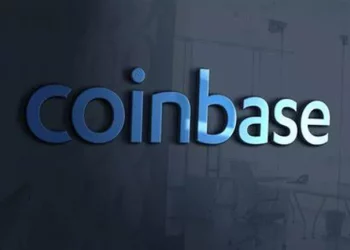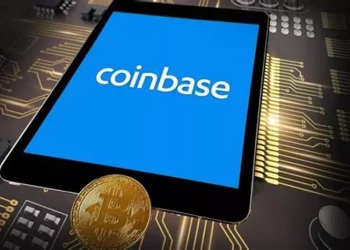Cryptocurrency trading has become one of the most popular ways to generate income in recent years, with numerous platforms offering users the opportunity to buy, sell, and trade digital assets. Binance, as one of the world’s largest cryptocurrency exchanges, has become a top choice for both beginners and experienced traders. The platform provides a range of features that allow users to maximize their earning potential, from spot trading to futures, staking, and beyond. In this article, we will walk you through how to make money trading crypto on Binance, covering a variety of methods, strategies, and tips to succeed in this dynamic market.
Introduction to Binance and Cryptocurrency Trading
Binance is one of the largest cryptocurrency exchanges globally, known for its wide selection of cryptocurrencies, robust security features, and a range of tools that cater to traders of all levels. Whether you are a beginner or an advanced trader, Binance provides a platform that allows you to engage in various types of crypto trading activities, each with its unique set of risks and rewards.
Cryptocurrency trading is essentially the act of buying and selling digital currencies like Bitcoin (BTC), Ethereum (ETH), and other altcoins in order to make a profit. Traders aim to buy assets when their prices are low and sell them when their prices are high. However, the crypto market is volatile, which means that profits and losses can occur rapidly.
There are several ways to make money trading on Binance, each suited to different trading styles and risk appetites. Let’s explore these methods in detail.
Spot Trading: The Basics
Spot trading is one of the most common and straightforward ways to make money on Binance. In spot trading, you buy cryptocurrencies at current market prices and sell them once the price increases. This method is similar to traditional stock trading, where you purchase assets and hold them until the value rises, and then sell them to realize a profit.
How Spot Trading Works on Binance
Create an Account and Deposit Funds: To start trading on Binance, you first need to create an account. After verifying your identity (KYC process), you can deposit cryptocurrencies or fiat currency into your Binance wallet.
Choose a Trading Pair: Binance offers various trading pairs, such as BTC/USDT, ETH/BTC, and others. Each trading pair consists of two cryptocurrencies, and you can choose which one to trade based on market conditions and your investment goals.
Place a Buy or Sell Order: Once you’ve chosen a trading pair, you can place an order to buy or sell. There are several types of orders available on Binance, including:
Market Orders: Buy or sell at the current market price.
Limit Orders: Buy or sell at a specific price or better. This order type allows you to set the price at which you’re willing to buy or sell.
Stop-Limit Orders: A combination of stop and limit orders used to manage risk.
Monitor the Market: The crypto market is volatile, so you’ll need to monitor price movements closely. Binance offers advanced charting tools that allow you to analyze market trends and make informed decisions.
Sell for Profit: After buying your cryptocurrency at a lower price, your goal is to sell it at a higher price to make a profit. You can set take-profit orders to automatically sell your assets once they reach a certain price.
Key Tips for Successful Spot Trading
Diversify Your Portfolio: Avoid putting all your funds into a single asset. Spread your investment across different cryptocurrencies to reduce risk.
Use Technical Analysis: Leverage tools like moving averages, RSI (Relative Strength Index), and MACD (Moving Average Convergence Divergence) to analyze market trends and make informed decisions.
Stay Informed: Keep up with news and developments in the cryptocurrency space. Major announcements and market trends can affect prices.
Set Realistic Goals: Don’t expect to make massive profits overnight. Set achievable profit goals and don’t get caught up in the hype.
Margin Trading: Leverage Your Positions
Margin trading allows traders to borrow funds from Binance to trade larger positions than they could with their own capital. This amplifies both potential profits and losses. It is more advanced than spot trading and requires a good understanding of risk management.
How Margin Trading Works
Deposit Collateral: To begin margin trading on Binance, you need to deposit collateral into your margin wallet. This collateral acts as security for the funds you borrow.
Borrow Funds: Binance allows users to borrow funds from the platform to leverage their trades. For example, if you deposit $1,000, you might be able to borrow an additional $1,000, doubling your buying power.
Trade with Leverage: Once you’ve borrowed funds, you can trade larger positions. For example, with 2x leverage, your $1,000 deposit can control a $2,000 position in the market.
Repay the Loan: When the trade is complete, you must repay the borrowed funds, along with any interest. If your trade is profitable, you’ll earn more than if you had only used your own funds. However, if your trade results in a loss, you will still need to repay the loan.
Key Risks of Margin Trading
Amplified Losses: While margin trading can increase potential profits, it also increases potential losses. If the market moves against your position, your losses can exceed your initial investment.
Liquidation Risk: If the value of your collateral falls below a certain threshold, Binance may liquidate your position to repay the loan. It’s important to maintain sufficient collateral to avoid liquidation.
Key Tips for Margin Trading
Use Low Leverage: If you’re new to margin trading, start with lower leverage to limit risk. For example, using 2x leverage instead of 10x can reduce the chances of liquidation.
Set Stop-Loss Orders: Always use stop-loss orders to minimize losses in case the market moves against your position.
Monitor Your Position Closely: Margin trading requires constant monitoring of your positions to ensure that you’re not overexposed to risk.
Futures Trading: Profit from Market Volatility
Futures trading allows you to buy and sell contracts based on the future price of an asset. It is a more complex form of trading that allows you to profit from both rising and falling markets.
How Futures Trading Works
Choose a Futures Contract: Binance offers various futures contracts for different cryptocurrencies. These contracts have an expiration date, and you can either go long (buy) or short (sell) depending on whether you think the price will go up or down.
Leverage in Futures Trading: Like margin trading, futures trading allows you to use leverage to increase your position size. You can use up to 125x leverage on Binance Futures, which can significantly amplify profits but also increase risk.
Buy or Sell Contracts: In futures trading, you’re not actually buying the cryptocurrency but instead entering into a contract that represents the asset. If you believe the price will rise, you go long, and if you believe the price will fall, you go short.
Close Your Position: Once you’ve profited from the price movement, you can close your position. The profit or loss is settled in USDT or another stablecoin.
Key Risks of Futures Trading
Liquidation Risk: With high leverage, your position can be liquidated if the market moves against you, resulting in the loss of your initial investment.
Market Volatility: Futures trading is highly speculative and subject to extreme volatility. Small market fluctuations can lead to large gains or losses.
Key Tips for Futures Trading
Use Stop-Loss and Take-Profit Orders: To limit risk and lock in profits, always set stop-loss and take-profit orders.
Manage Your Leverage: Avoid using high leverage unless you are an experienced trader. Using leverage increases both potential profits and risks.
Stay Updated on Market News: Futures prices are often influenced by global events, so staying updated on news is essential.
Staking: Earn Passive Income
Staking allows users to earn passive income by holding and locking up their cryptocurrency in a staking wallet. Binance offers staking services for various cryptocurrencies, including Ethereum 2.0, Binance Coin (BNB), and Cardano (ADA).
How Staking Works
Choose a Staking Option: Binance offers different staking products, including locked staking (where you commit your crypto for a certain period) and flexible staking (where you can withdraw your funds at any time).
Stake Your Cryptocurrency: Once you’ve chosen a staking option, you can stake your cryptocurrency by transferring it to the appropriate staking wallet on Binance.
Earn Rewards: In return for staking your crypto, you will receive rewards, typically paid out in the same cryptocurrency or in a stablecoin like USDT. The rewards are usually based on the annual percentage yield (APY).
Key Tips for Staking
Understand Lockup Periods: Some staking options require you to lock up your funds for a certain period. Make sure you’re comfortable with this before committing.
Research Staking Rewards: The rewards for staking vary depending on the cryptocurrency and the staking option. Make sure you choose an option that offers competitive returns.
Binance Launchpad: Invest in Early-Stage Projects
Binance Launchpad is a platform where users can invest in new cryptocurrency projects during their Initial Exchange Offerings (IEOs). These early-stage projects have the potential to grow rapidly, offering investors the chance to make significant profits.
How Binance Launchpad Works
Participate in IEOs: To participate in IEOs on Binance Launchpad, you need to hold Binance Coin (BNB) in your account. The more BNB you hold, the higher your chances of being selected for the IEO.
Invest in the IEO: When a new project is launched, Binance will provide details about the IEO, including the project’s goals, tokenomics, and investment options. If you’re selected, you can invest in the project’s token at the launch price.
Sell or Hold Tokens: After purchasing the tokens, you can choose to hold them for potential future gains or sell them once they are listed on the Binance exchange.
Key Tips for Launchpad Investments
Do Your Research: Always research the project thoroughly before investing in any IEO. Not all projects will succeed.
Monitor Token Performance: After the IEO, monitor the token’s price and market activity to determine when to sell.
Conclusion
Making money trading crypto on Binance requires knowledge, strategy, and risk management. By exploring various methods like spot trading, margin trading, futures trading, staking, and Launchpad investments, you can diversify your approach to maximize profits. However, it’s important to remember that cryptocurrency trading is risky, and it’s essential to stay informed, manage your risks, and never invest more than you can afford to lose.
By combining the right tools, strategies, and discipline, you can navigate the exciting world of crypto trading on Binance and work toward achieving your financial goals.
Related topics:

















